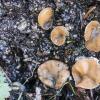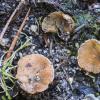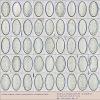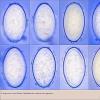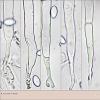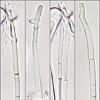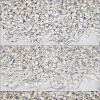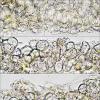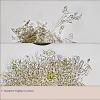
09-01-2026 17:41
Arnold BüschlenHallo, F. dilatata wird von vielen Bryoparasiten

10-01-2026 20:00
Tom SchrierHi all,We found picnidia on Protoparmeliopsis mur

07-01-2026 22:22
 Danny Newman
Danny Newman
Tatraea sp. on indet. hardwood The Swag, Great Sm

10-01-2026 01:18
 Danny Newman
Danny Newman
cf. Neovaginatispora fuckelii on indet. shrub Pre

07-01-2026 10:24
 Danny Newman
Danny Newman
Pezicula sp. on indet. hardwood Appalachian Highl

09-01-2026 10:08
 Blasco Rafael
Blasco Rafael
Hola, en el mismo habitat que la anteriorRetamaDia

08-01-2026 21:22
 Blasco Rafael
Blasco Rafael
Hola, He recogido esta muestra de Orbilia sobre Re

07-01-2026 17:29
 Marc Detollenaere
Marc Detollenaere
Dear Forum,On a barkless Populus I found some smal

10-11-2021 17:33
 Riet van Oosten
Riet van Oosten
Add-on topic http://www.ascofrance.com/forum/7059

07-01-2026 10:05
 Danny Newman
Danny Newman
cf. Chaetospermum on XylariaCosby Campground, Grea
 Hi evrybody,
Hi evrybody,Apothecia 7-15mm in diameter, on a small slope of a mountain stream to 1826 m. in altitude between roots of Juniperus communis and next to bryophytes. Stalk very short, almost hidden in the adhering earth. Smell unpleasant, sulfurous components.
Microscopy:
Spores oval, smooth, (15.8) 16.3 to 18 (18.5) x (9.2) 9.4 to 10.3 (10.8) µm, Q = (1.6) 1.64 to 1.8 (1.9), N = 62;I = 17.2 x 9.9 µm; Qe = 1.7, enveloped in a mucilaginous sheath (0.9) 0.95 to 1.5 (1.7) µm;Me = 1.2 µm.
Asci no amyloid, 266.8 to 295.9 x 13.2 to 15.2 µm; I = 282.6 x 14.4 m. Bifurcated or single base.
Paraphyses filiform, septate, slightly widened at apex, often with diverticulate growths.
Marginal hyphae septate, sinuous and rather variable morphology, apex widened, more or less diverticulate (3.8) 3.9 to 6.9 (7.7) µm thick.
Texture of two types: under hymenium, texture intricata from 160.9 to 181.7µm formed by hyphae (4.5) from 5.1 to 8 (9.4) ?m. Then, texture
globuloso-angularis 90.7 to 102.89 µm, with elements of (17.3) 19.2 to 27.7 (28.8) µm in diameter.
According to the work "GARNWEIDNER, E., T. R. LOHMEYER, H. MARXMÜLLER (1991) Vel-Geopysis foetida., G. Alpine v. Taxa nahestehende und Höhnel - mehr als Fragen Antworten", mucilaginous sheath of spores and stipe barely evident, appears to be an important element that distinguishes Geopysis alpina.
My spores measurements are somewhat larger than those defined in this work, but I do not know how important it can be.
I would like to seek your opinion on this collection.

I have write Geopysis instead of Geopyxis!!

Hi Fermin.
This collection enters in the alpina/foetida complex. I sequenced collections with and without smell, and all are the same...
Nico

I'm afraid that.
